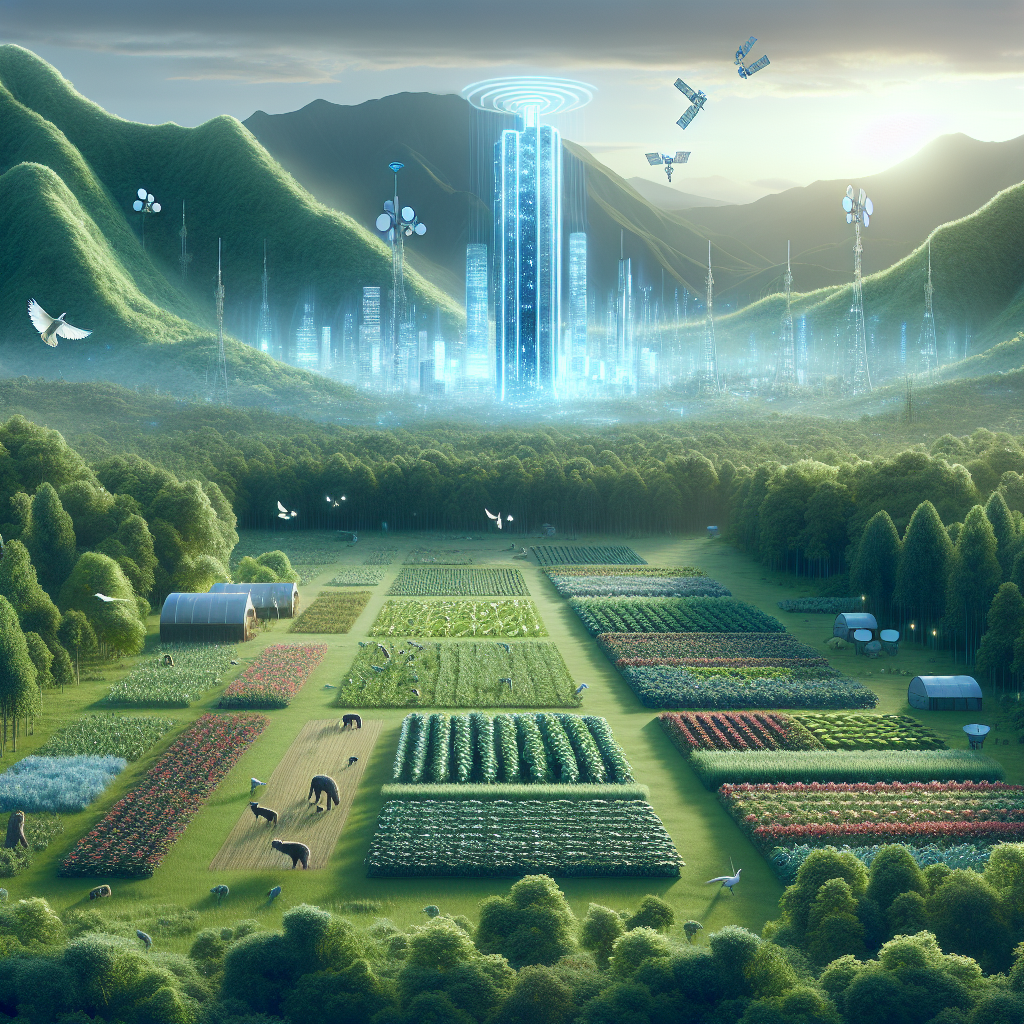Agroforestry is a sustainable land management system that combines agriculture and forestry practices to create diverse and productive landscapes. By integrating trees and shrubs into agricultural systems, agroforestry can enhance soil health, water quality, and biodiversity while also providing economic benefits to farmers. However, managing agroforestry systems can be complex and time-consuming, requiring a deep understanding of the interactions between different plant species and their environments.
With the rapid advancements in artificial intelligence (AI) technology, there is a growing opportunity to leverage AI tools to enhance agroforestry practices and biodiversity conservation. AI can help farmers and land managers make more informed decisions by analyzing large amounts of data to identify patterns and predict outcomes. By incorporating AI into agroforestry practices, farmers can optimize planting strategies, monitor tree health, and improve biodiversity conservation efforts.
One of the key ways AI can enhance agroforestry is through precision agriculture techniques. Precision agriculture uses technology such as sensors, drones, and satellite imagery to collect data on soil health, crop growth, and environmental conditions. By analyzing this data with AI algorithms, farmers can make more precise decisions about where and when to plant trees, how to manage pests and diseases, and how to optimize water and nutrient usage. This can lead to increased crop yields, improved soil health, and reduced environmental impact.
AI can also help farmers monitor the health of their trees and crops more effectively. By using image recognition algorithms, AI can analyze drone or satellite imagery to detect signs of stress, disease, or pest infestation in trees and crops. This early detection can allow farmers to take proactive measures to prevent crop loss and maintain the health of their agroforestry systems.
In addition to improving productivity and sustainability, AI can also play a key role in biodiversity conservation in agroforestry systems. By analyzing data on plant and animal species present in agroforestry landscapes, AI can help identify areas of high biodiversity value and prioritize conservation efforts. AI can also assist in monitoring the impact of agroforestry practices on biodiversity, helping farmers and land managers make informed decisions about how to manage their landscapes in a way that supports diverse ecosystems.
Overall, the integration of AI into agroforestry practices has the potential to revolutionize how we manage agricultural landscapes. By leveraging AI tools to analyze data, make predictions, and optimize management strategies, farmers and land managers can enhance productivity, sustainability, and biodiversity conservation in agroforestry systems.
FAQs
Q: What are some examples of AI tools that can be used in agroforestry?
A: Some examples of AI tools that can be used in agroforestry include image recognition algorithms for monitoring tree health, predictive modeling algorithms for optimizing planting strategies, and data analysis tools for identifying patterns in soil health and crop growth.
Q: How can AI help farmers make more informed decisions about agroforestry practices?
A: AI can help farmers make more informed decisions by analyzing large amounts of data to identify patterns and predict outcomes. By using AI tools to analyze data on soil health, crop growth, and environmental conditions, farmers can make more precise decisions about where and when to plant trees, how to manage pests and diseases, and how to optimize water and nutrient usage.
Q: How can AI help enhance biodiversity conservation in agroforestry systems?
A: AI can help enhance biodiversity conservation in agroforestry systems by analyzing data on plant and animal species present in agroforestry landscapes. By identifying areas of high biodiversity value and monitoring the impact of agroforestry practices on biodiversity, AI can help farmers and land managers make informed decisions about how to manage their landscapes in a way that supports diverse ecosystems.

